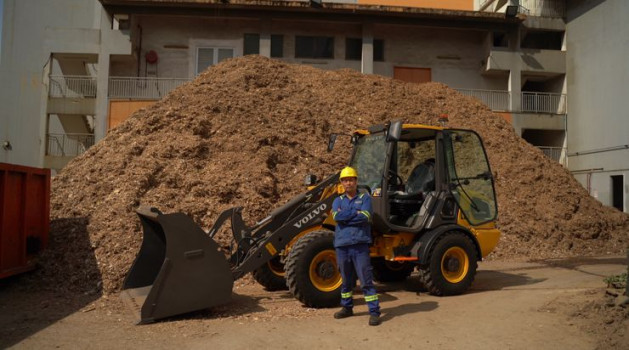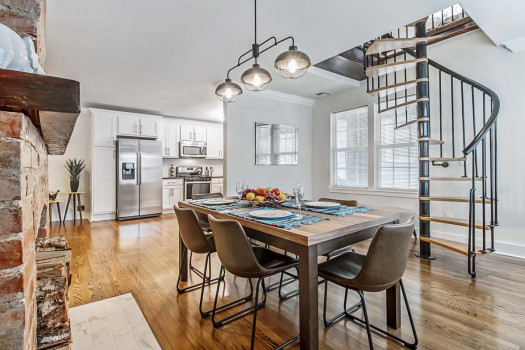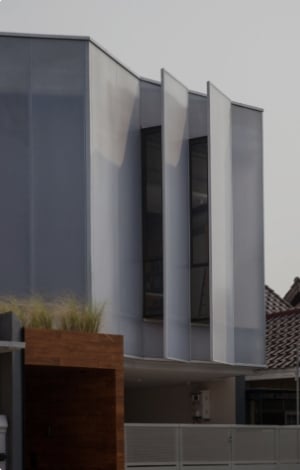Mapei's Waterproofing Systems for Roofs




What is a roof and what is its function?
In the building industry, a roof is the part of a building that covers and protects the construction underneath it and, in turn, protects the rooms from atmospheric conditions such as rain, snow and cold weather. At the same time, a roof also has to withstand the design stresses and loads acting on it, which depend on what the roof is actually designed for.
A roof may be exploited to serve a number of different purposes: as a simple terrace or balcony, for example, or for more technical applications (such as a place to house a building’s plant and service equipment), to allow the passage of vehicles (such as a roof-top carpark on a shopping centre), or else a rooftop garden (such as the one on the Vertical Forest building in Piazza Garibaldi in Milan), to greenify densely populated metropolitan areas, etc. Whatever the specific function and purpose of a roof, it is important to study its stratographic layout very carefully in order to define the most suitable waterproofing system to ensure the roof is able to protect the building and maintains its resistance over the years, thereby ensuring the durability of the entire structure.
Why do we call them “waterproofing systems”?
In order for it carry out its primary function of protecting a building, not only do the best waterproofing products available need to be employed, but also any other accessory items and relative products required; this is why we need to refer to it as a "waterproofing system".
The Mapei range of waterproofing solutions includes various waterproofing systems. For balconies and terraces, for example, there is the MAPELASTIC line and relative accessory items such as special sealing tapes (MAPEBAND EASY, MAPEBAND SA and MAPEBAND TPE) and drainage items from the DRAIN line.
For roofs, on the other hand, the products available can vary from the AQUAFLEX ROOF range of liquid acrylic membranes to the PURTOP EASY line of polyurethane membranes, or lastly the PURTOP range of polyurea membranes.
Choosing the most appropriate product range depends on the function of a roof.
Is it more effective to apply a waterproofing solution over or underneath the layer that forms a slope?
In order for a waterproofing solution to last over the years and, as a result, enable a roof to also last over the years, it is important that it is applied on a sloping substrate.
With a balcony or terrace, for example, applying the waterproofing layer on a sloping substrate protects the screed and the other underlying layers from water, which in turn prevents water seeping into joints and affecting the functionality of the entire structure. This also allows the water to run off correctly towards drainage points so that it doesn’t remain under the ceramic tiles, which would then lead to the onset of various problems.
In the case of a flat roof with a bituminous membrane, for example, water may collect in any depressions or hollows that have formed in the membrane and provoke the so-called “lens-effect”. In such conditions, heat from the sun causes a dark roof to warm up, which leads to premature deterioration of the waterproof membrane and, as a result, a reduction of the roof’s service life. If a waterproof membrane is installed on a sloping surface, on the other hand, this phenomenon does not occur.
In both cases, and in all similar situations, it is very important to carry out the correct, routine maintenance on guttering, downpipes and runoff channels.
What is the minimum thickness required in order to waterproof a surface correctly?
The minimum thickness for a waterproofing system varies and depends on the type of material applied, the characteristics of the material, such as its thixotropy, and the area of use of the structure.
As far as cementitious waterproofing systems are concerned, such as products from the MAPELASTIC line, the total recommended thickness of the layer to be applied is 2 mm. This thickness is easy to achieve by using a notched trowel to apply the product, thanks also to the reinforcement which is sometimes used to improve the product’s performance properties.
In the case of polyurea systems, on the other hand, we suggest applying a 2 mm thick layer. In such cases, the correct thickness can be achieved by using specific tools as thickness guides, especially if skilled, specialised workmen are employed to apply the product.
In the case of polyurethane systems, we suggest applying a single layer (1.2-1.5 mm thick) in order to form a waterproof membrane with excellent mechanical properties, thanks also to the use of specific additives.
And lastly, the final thickness for water-based liquid membranes (such as those belonging the AQUAFLEX ROOF line) is 1 mm, which may be increased according to the area of use of the roof.
Can ceramic tiles be installed directly over a waterproofing system?
They certainly can. If a client wants a terrace, balcony or roof covered with material suitable for external applications, Mapei can offer an extensive range of adhesives available for bonding it to waterproofing systems.
For example, for a cementitious waterproofing system from the MAPELASTIC line, we suggest a class C2 cementitious adhesive according to EN 12004, while for a polyurea waterproofing system, we suggest using an epoxy or epoxy-polyurethane adhesive.
Also, we mustn’t forget that liquid membranes for external applications, such as balconies, terraces and roofs, are covered by EN 14891. This European standard is used to evaluate the conformity, classification and area of use of liquid waterproofing products applied underneath external covering materials. The standard specifies the test methods to be used and the performance levels required for liquid waterproofing products applied underneath a covering material, such as ceramic tiles bonded with adhesives.
Is it possible to intervene on an existing bituminous membrane? And if so, how?
Absolutely. In this case, too, it is important to clarify various aspects before starting, such as the area of use or the final finish required by the client. So, we should ask ourselves: is the flat roof with the bituminous waterproofing system used to house plant or service equipment? Will vehicles need to pass over the roof? Or is it for a terrace that needs to be renovated?
Whatever the situation, Mapei has just the right solution to give any roof a new waterproofing system without having to remove the old bituminous membrane.
Mapei can offer liquid acrylic membranes from the AQUAFLEX ROOF line, polyurethane membranes from the PURTOP EASY line or polyurea membranes from the PURTOP line. In such cases, once the substrate has been prepared correctly with special primers, the waterproofing product may be applied. These solutions should be adopted in the case of exposed roofs used for technical purposes.
If, on the other hand, we need to work on a roof with a bituminous membrane and turn it into a terrace with ceramic flooring, we suggest creating a sloping screed with just the right amount of slope, applying a cementitious waterproofing system from the MAPELASTIC line over the screed and then install the ceramic tiles over the membrane.
The indications above are just a general guide, because with building work there are a multitude of variables and variations that need to be carefully considered for which there is always the right solution.
What does routine maintenance consist of and how important is it?
Maintaining and maintenance are synonyms for “conserving a good level of efficiency”. Maintenance work on a roof is essential for the durability of the structure itself.
Mapei products, which are certified according to European standard EN 1504-2, already play an important part in protecting structures and, as a result, they maintain their durability over the years. If, however, these products are not used correctly, or if they are not stored in the right conditions, it will be the roof that suffers by gradually losing its overall efficiency.




Products mentioned in the article:
Solutions:
- Waterproofing System for Flat Roofs
- Waterproofing system for the installation of ceramic tiles on terraces and flat roofs
- System to repair the bitumen waterproofing layer on old flat roofs using a ready-to-use waterproofer with high solar reflectance
- System to repair the bitumen waterproofing layer on old flat roofs using a hybrid polyurea membrane
- System for waterproofing reinforced concrete spectator terraces with sprayed polyurea hybrid membrane
- Rapid system for waterproofing and installing ceramic tiles on balconies
- Polyurea membrane applied in-situ for waterproofing hydraulic works in general
- Pure polyurea membrane sprayed in-situ for waterproofing swimming-pools
- Hybrid polyurea membrane sprayed in-situ for waterproofing roof gardens
- Hybrid polyurea membrane applied in-situ for waterproofing flat metallic roofs









 Indonesia
Indonesia
 Australia
Australia
 New Zealand
New Zealand
 Philippines
Philippines
 Hongkong
Hongkong
 Malaysia
Malaysia





